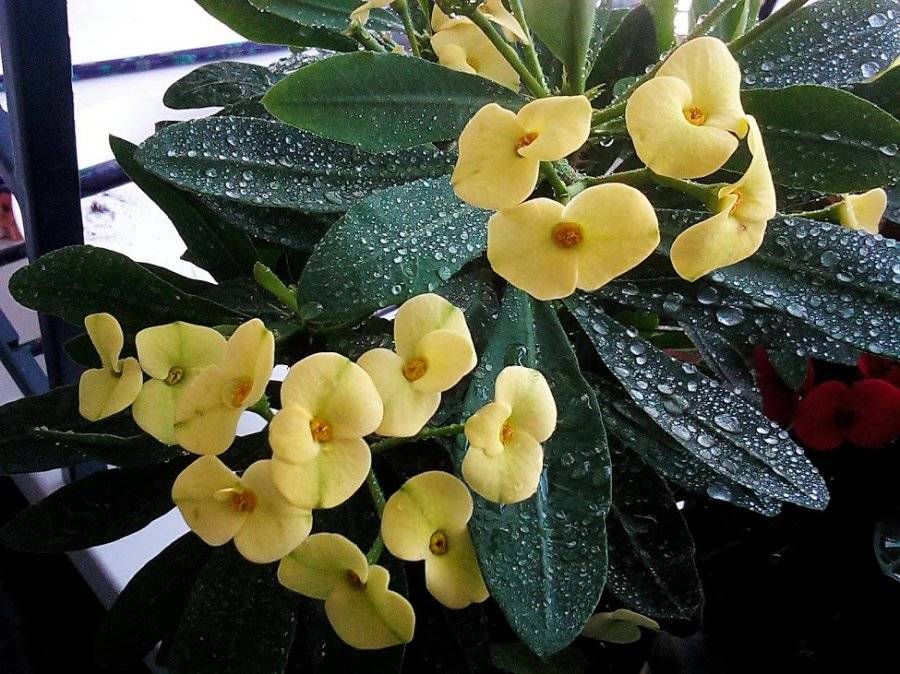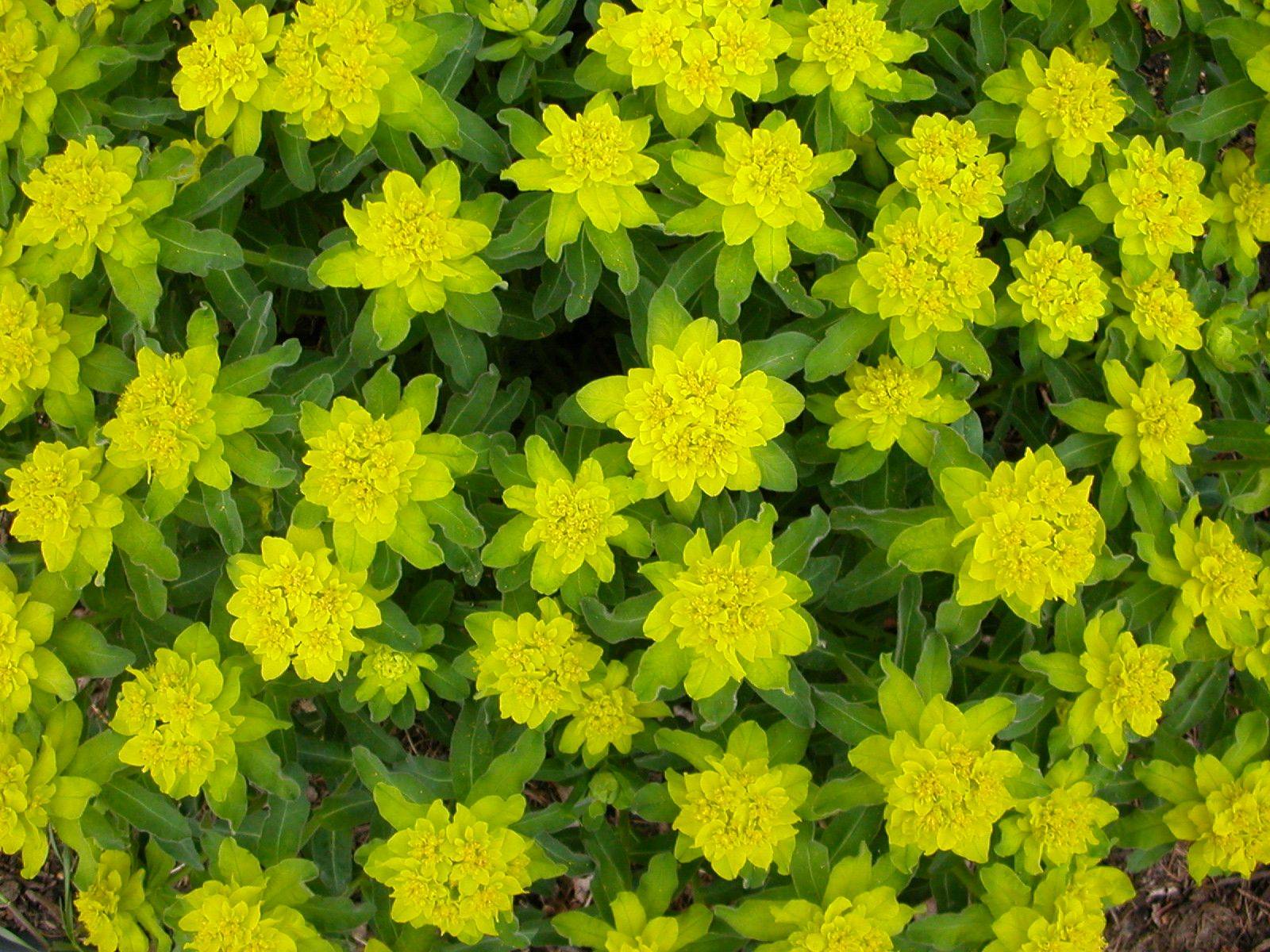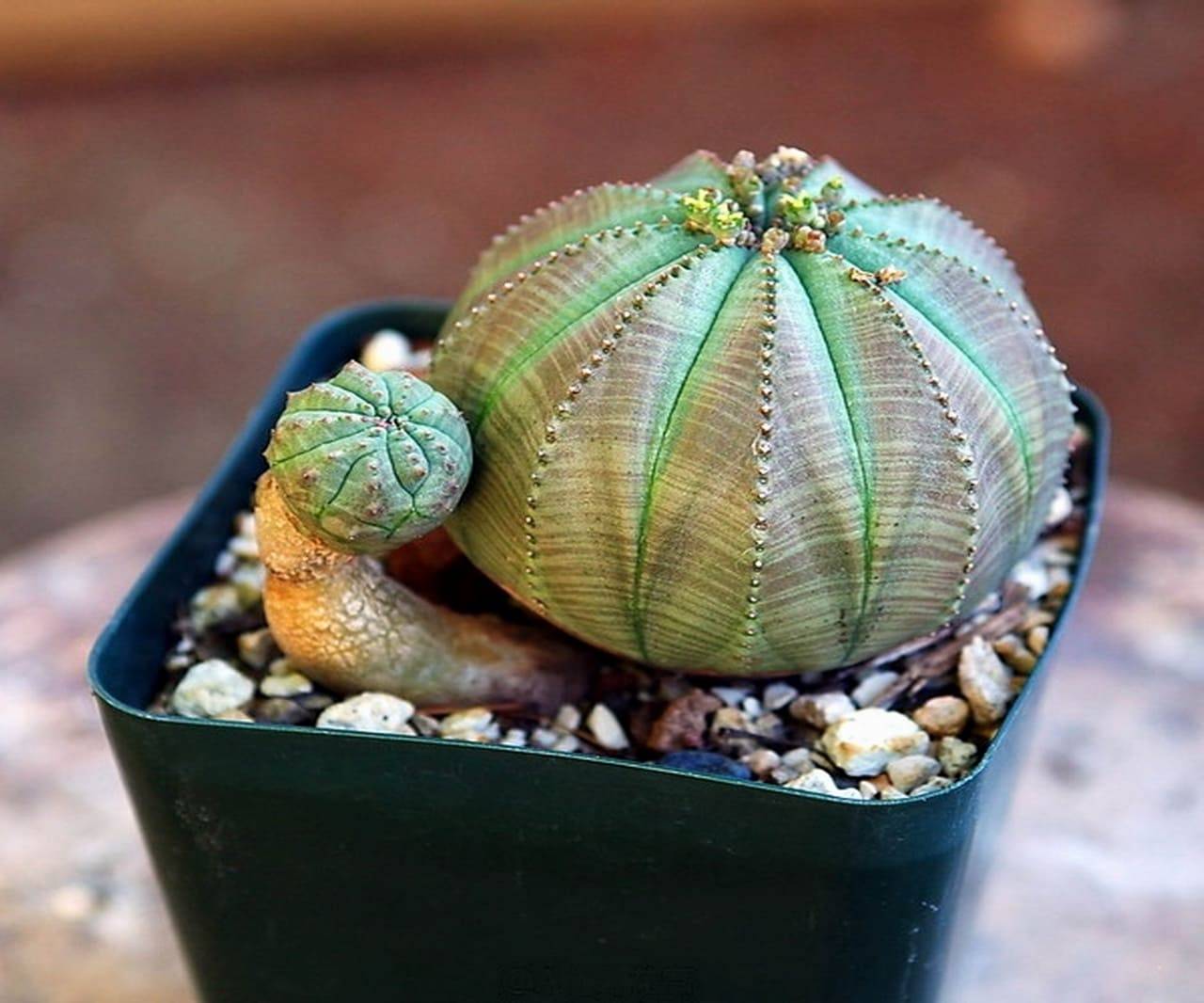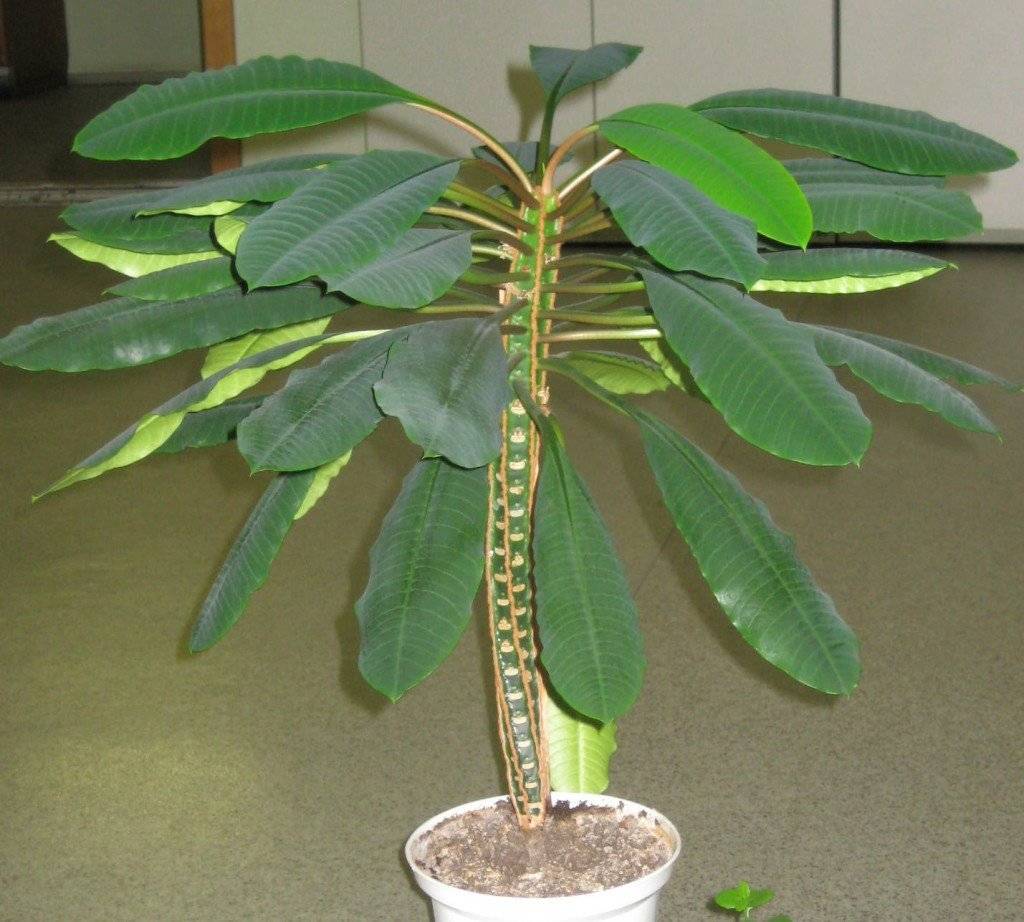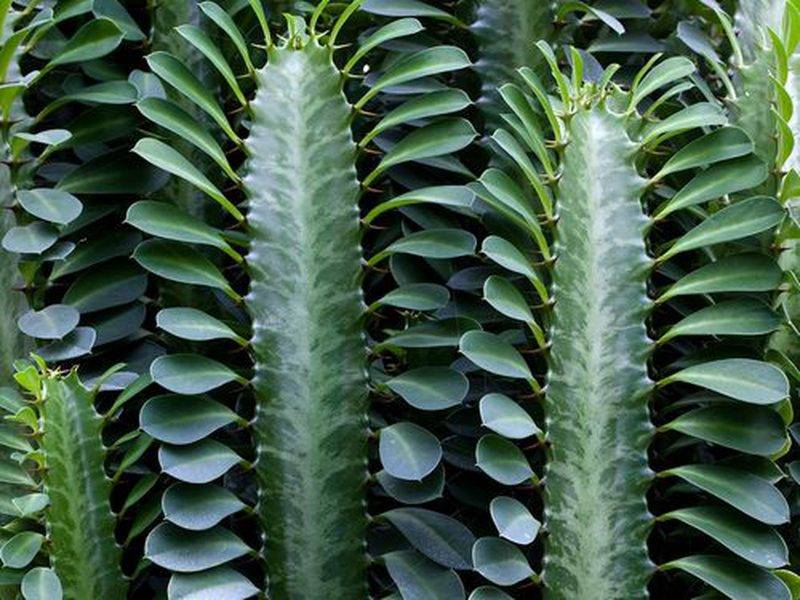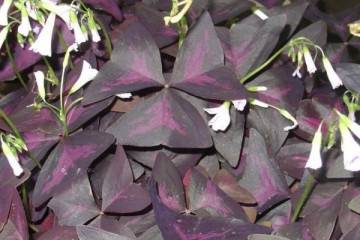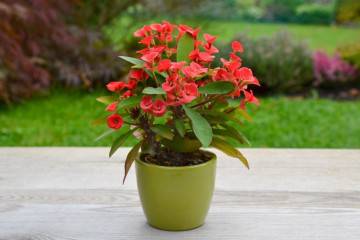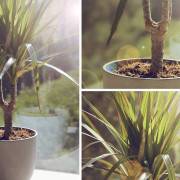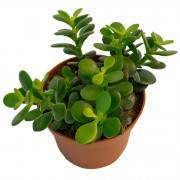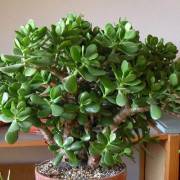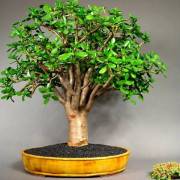Indoor euphorbia flower - description and care
Content:
The Euphorbia family has up to 2 thousand species. In Russia alone, there are about 150 varieties of milkweed. The people call him a milkweed, a milkman, an eater. Various types of milkweed are found in the European part of the country, Siberia, the Caucasus and Central Asia. Euphorbia is monotonous in appearance and differ only in the details of the structure. All plants of this species have a poisonous milky sap.
The most common types
Mila is a thorny shrub with thin elliptical leaves. Small flowers come in white and yellow.
The multi-flowered species is predominantly planted in gardens. The bush has a cup-shaped shape and forms a bright green crown of an elongated oval shape. In early spring, it is covered with emerald-yellow flowers. Plant height 70 cm.
Fat resembles a cactus. It has a cylindrical shape and slightly bumpy ribs. Doesn't grow taller than 10 cm
Crested is an evergreen shrub with a large ribbed stem. Its leaves are rounded, elongated, about 20 cm long; they gather at the top of the stem. The flowers are white and pink on a small peduncle.
White-veined (white-veined) - a houseplant with a strong ribbed stem. Long, rounded dark green leaves form at the end of the trunk, the lower ones die off. The flowers are inconspicuous because they are small. This spurge grows up to 1.5 m.
Triangular is another houseplant, but it reaches 3 m. It has a thick stem (5-6 cm wide), the jagged edges are covered with small leaves and thorns. It blooms rarely.
Euphorbia Tirucalli does not have leaves and thorns, it blooms with good care.
Euphorbia: home care
How to care for milkweed? Euphorbia flower is an extremely unpretentious plant. It is often planted in an apartment and office for landscaping, as it is extremely undemanding to care for at home.
On what soil does spurge grow
Indoor flower soil can be purchased at a flower shop. You need to choose a substrate for succulents or cacti.
It is better to plant the plant in a shallow clay pot, since the roots of the milkweed are weak and are located on the surface. When the flower grows in size, it is necessary to transplant it into a larger pot. Do not plant in too massive, for a plant it is enough if the next one is 3-4 cm larger than the previous one.
The new flowerpot should have a good drainage system, as the water should not stagnate and the roots need ventilation. It is worth considering that an adult plant can turn the pot over, so it needs to be well strengthened (the flowerpot must be heavy, you can also put stones on the bottom to make it heavier).
Seat selection
The euphorbia flower loves the sun, so the pot can be placed on the windowsill on the south side: it is one of the few who tolerates direct sunlight well. In winter, there should also be enough sun.If there is little light, it is necessary to supplement the illumination with fluorescent or LED lamps. The air must be dry. Euphorbia does not tolerate drafts and dampness.
Temperature
An indoor euphorbia flower feels good at 18-20 ° C. It can withstand even lower temperatures up to 5 ° C. In the summer, it is better to keep the plant outdoors, but you need to monitor the temperature, with minus indicators, the plant will die.
Watering
Do not flood the plant, this can cause rotting of the roots. Water the spurge only after the soil in the pot dries well. But it is also impossible to overdry the soil, as the spurge will begin to shed its leaves. In winter, the plant is watered less, once a week and only when the soil is well dried, otherwise root rot and root collar are provided.
Fertilizers
Despite the fact that indoor euphorbia is undemanding to care for, it still needs feeding. You can use fertilizers for cacti and succulent plants. During flowering, fertilizers containing potassium are required.
Flower formation
Blooming spurge is very beautiful. Some species require pruning every year. You need to remove old leaves after flowering, usually in June-July. Flowers will appear on new strong shoots next year. If you want to form a powerful bush, then you need to prune and pinch regularly, it is better to do this in the spring.
How to propagate milkweed at home
Young plants require an annual transplant as they grow. The pot is gradually increased by 2-3 cm. For thorny euphorbia, soil is used for succulent plants; for leafy plants, you can take a universal one. The pot, if used, must be treated with potassium permanganate. Water the plant itself well before transplanting to make it easier to remove from the old flowerpot. They shake the earth a little from the roots, place the plant in the center of the pot and fill the voids with fresh soil.
Usually, the transplant is carried out in the spring, but if there is a suspicion of root decay, you need to save the flower immediately.
Another reproduction of milkweed is possible by seeds, which it scatters after flowering. They are collected in a bag and stored for no more than a year. Before planting, the planting material must be soaked in water. This is an extremely time consuming method.
It is much easier to propagate the plant by cuttings. It is better to do this in the fall. To root the euphorbia, you need to cut off the process up to 10 cm, treat the cut with charcoal, then stick it into wet sand to form a root system. In no case should the sand be overdried, the soil must be wet. You should also remove the cuttings from the draft and cover with a film like a greenhouse.
How does Euphorbia reproduce in the easiest way? Dividing a bush is the fastest way to get a new plant. When transplanting, they simply divide the root system and plant the resulting parts in different pots.
What to do if the plant is sick
Euphorbia is quite resistant to diseases and pests. Most often, he suffers from frequent watering: the roots rot, and the plant begins to turn yellow and shed foliage. If the leaves begin to fall off, the plant is 100% sick.
In addition, there are other problems.
- Dark spots on the leaves indicate fungal infection. In the treatment, fungicidal preparations will be needed.
- If the plant is attacked by pests, urgent action is needed. A spider mite can be found by the thin filaments and white bloom on the back of the foliage. To eliminate the parasite, you need to bathe the plant by washing the leaves well with soapy water.Mealy worm, which leaves a white coating on the leaves, is destroyed with a solution of soap, sprayed with infusion of garlic, tobacco, calendula.
- The appearance of multi-colored spots indicates that a scabbard has started up on the plant. It is removed with an insecticidal preparation Aktara. Aphids must be collected, and then spray the flower with infusion of mustard, garlic or onions.
Why is the plant dangerous?
Euphorbia is a home flower. However, this houseplant produces a toxic milky sap that can harm households and animals. Allergy sufferers are especially affected.
- Damage to the poisonous juice of milkweed can cause irritation and burns of the skin.
- If the juice gets in your eyes, you can temporarily go blind and even be permanently injured.
- An allergic reaction is possible: lacrimation, skin rashes.
- If the juice gets inside, vomiting, dizziness, respiratory failure, swelling of the tongue, convulsions may occur.
What to do in this case? Be sure to call a doctor!
- You need to take antihistamines before the doctor arrives.
- If the juice gets on the skin, rinse, apply a piece of ice to the burn.
- In case of contact with eyes, drip albucide to prevent infection. If the eyes are red, drip any antiallergic drops.
- In case of poisoning with plant juice, you need to rinse the stomach, drink activated charcoal, take enterosgel and other intestinal cleaning agents, use a laxative.
What is the use of the plant
Euphorbia flowers have medicinal properties and are of great benefit. It is no coincidence that its scientific name is euphorbia, presumably in honor of the Numidian court healer Ephorbus (54 BC), who was the first to use milkweed juice for treatment.
- The water infusion has a strong laxative, emetic and antihelminthic agent.
- Milky juice is used to remove freckles, corns, warts and age spots. In the old days, they were treated for tumors and animal bites.
- Milkweed have insecticidal properties to kill insects.
- In Russia, it was used against spell casting.
- Modern medicine also uses the medicinal properties of milkweed, this plant is especially popular in medicine in China and Mongolia.
Spurge in the house has a strong energy. If you want to protect your home, keep good relations in your family, you should plant this wonderful plant. How to care for him was discussed above. But it is worth handling it carefully, as the juice of the flower contains poison.
